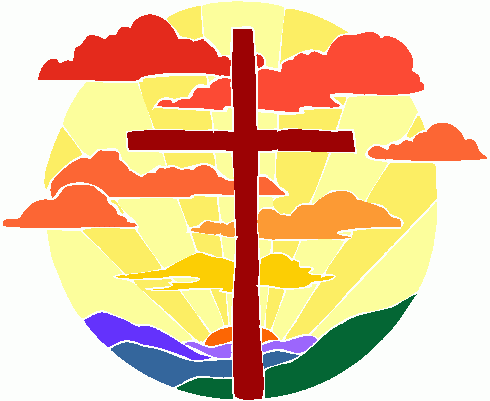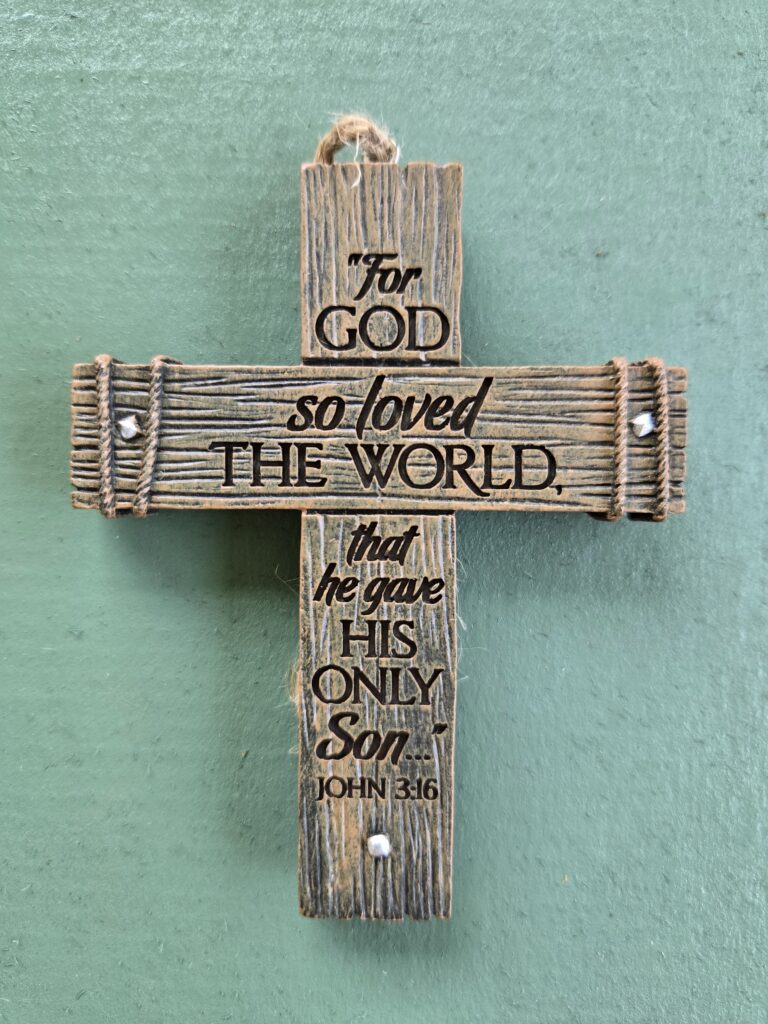When I mentioned to a couple of people that I was writing this article on “Why is the cross an important symbol to Christians?”, they thought it was a no-brainer. Jesus died on the cross for us, and we use the symbol to remember and honor Him for doing so. End of article? Well…I wanted to think about it a bit more.
What the Cross Was
Historically, crucifixion is one of the most cruel means of execution that mankind has ever devised. Our English word “excruciating” even comes from the same root: Latin crux, which literally means “cross”. This 15-minute video gives a good description of the history and practice of crucifixion as implemented by the Roman Empire 1. If you don’t have the 15 minutes available, the points I want to emphasize here are:
- It was so horrible that it was only used for slaves and lowly conquered peoples. It was not allowed for Roman citizens or anyone considered honorable.
- The horror was intended as an object lesson: “Don’t mess with Rome!”
- One example was in the slave rebellion led by Spartacus in 71 B.C. When the rebellion was crushed, 6000 of the rebels were crucified. Their crosses lined both sides of the highway into Rome for over 100 miles. This was 70 years before Jesus was born, so He would have been familiar with the event.
- Jews would have considered anyone crucified to be cursed by God.
- In Galatians 3:13, Paul considered Jesus’ crucifixion to be a kind of fulfillment of Deuteronomy 21:22-23, which says “he who is hanged is accursed of God.“
So, until Jesus changed everything, the cross was a symbol of ultimate defeat, rejection and humiliation.
What Jesus Did on the Cross
There is plenty of information available describing how Jesus’ life, death, and resurrection make our salvation possible, and why such a sacrifice was necessary 3. After all, if Jesus had died peacefully in His sleep of natural causes then even His resurrection would not have been enough for Him to be Savior. His sacrificial death to atone for our sin and provide for reconciliation with God was predicted well in advance, in places like Isaiah 53. Psalm 22 and Zechariah 12:10 describe a death that looks pretty specific to crucifixion:
I am poured out like water, and all my bones are out of joint;
Psalm 22:14-18; Zechariah 12:10
My heart is like wax; It is melted within me.
My strength is dried up like a potsherd, and my tongue cleaves to my jaws;
And You lay me in the dust of death.
For dogs have surrounded me; A band of evildoers has encompassed me;
They pierced my hands and my feet. I can count all my bones.
They look, they stare at me;
They divide my garments among them, and for my clothing they cast lots.
…
I will pour out on the house of David and on the inhabitants of Jerusalem, the Spirit of grace and of supplication, so that they will look on Me whom they have pierced; and they will mourn for Him, as one mourns for an only son, and they will weep bitterly over Him like the bitter weeping over a firstborn.
But Still… Why a Cross?
But I became curious about another aspect: Why did God choose a cross as the method of sacrifice? Wouldn’t death by beheading (like John the Baptist in Mark 6:17-29), or stoning as was the Jewish preferred capital punishment (Stephen in Acts 7:54-60), or even in the Coliseum 4, have served God’s purpose with at least slightly less torment for His beloved human-but-also-divine Son? I can think of a couple of reasons why God might have made the choice that He did.
The main reasons I see are:
- Sin is really that awful, and requires an awful price. Nothing resembling a shortcut or easier way out would have been sufficient.
- The Bible speaks often of the “wrath of God” against sin. The disasters described in the future end of time are physical displays of some of that wrath. When Jesus gave His life for us, that same wrath was poured out on Him. That demanded an extraordinary amount of suffering.
- The public shame was a part of the sacrifice. It wasn’t just the pain, or the cessation of life; it was the rejection even by the Father (Matthew 27:46).
- Jesus is the eternal Son of God, forever bound in love to the Father and the Spirit. But He become human in order to save us, and at His death He was forsaken by the Father for the first and only time in all eternity.
- The location — in Jerusalem, the Holy City that God claimed as uniquely His (2 Chronicles 6:5-6, 2 Chronicles 7:1-2) — was significant as the place where sacrifices were to be offered. (That rules out the Coliseum.)
- The Passover lamb, especially, could only be sacrificed in Jerusalem, nowhere else (Deuteronomy 16:5-6).
- But the specific location, outside the city limits, was another sign of rejection (Hebrews 13:11-12).
Secondary reasons that occur to me include:
- Being very visible was important.
- Jesus told Nicodemus “As Moses lifted up the serpent in the wilderness, even so must the Son of Man be lifted up; so that whoever believes will in Him have eternal life.” (John 3:14-15, See Numbers 21:6-9 for the “serpent” reference) Then, on another occasion, He said “I, if I am lifted up from the earth, will draw all men to Myself.” (John 12:31-33) Everyone, both friends and enemies, needed to see His death. There could be no doubt or room for error about what was happening.
- He needed to be able to talk (hard to do with a beheading!)
- From forgiving His tormentors (Luke 23:34), saving a repentant criminal (Luke 23:39-43), and providing for His mother (John 19:26-27) to declaring victory (John 19:30) 5 and voluntarily giving up His life (Luke 23:44-46), Jesus consciously kept on confirming that He was the Messiah, God’s Son, the One promised by God all the way back to Genesis 3:15.
What the Cross is Now
Just as the resurrection would lose much of its power if not for the cross, the reverse is also true. Jesus’ death would have been just one more among thousands…if He had stayed dead. But He didn’t! When that tomb was found empty, and He was seen alive by many people in many times and places, it was proof that He had won. He conquered not only physical death, but, much more importantly, the spiritual barrier that kept us away from God.
O DEATH, WHERE IS YOUR VICTORY? O DEATH, WHERE IS YOUR STING?” The sting of death is sin, and the power of sin is the law; but thanks be to God, who gives us the victory through our Lord Jesus Christ.
1 Corinthians 15:55-57
One of the commandments that God gave to Moses was for the people to wear what are now called “tzitzit” (prayer tassels) on their clothing. The tassels are a constant reminder of God and of the obligation to obey and honor Him. Today, our cross necklaces and other cross symbols serve a similar purpose. They are a reminder of what Jesus did for us and of our responsibility to use our redeemed lives to glorify Him.
The cross was a symbol of shame. Jesus died bearing OUR sin and shame, not His own. When He arose, He turned that shame into victory, and the cross became a symbol of that victory. We display it proudly…and gratefully!
Here are links to a few songs that describe how much that cross means to us. Enjoy!
- Old Rugged Cross
- At The Cross
- Near the Cross
- Down at the Cross
- When I Survey the Wondrous Cross
- At Calvary
Footnotes and Scripture References
- They didn’t start the practice. They just enthusiastically made use of it.
- In his speech “Pro Rabirio Postumo” arguing in defense of a man on trial.
- That includes articles on this site like: Atonement; Saved, Savior, Salvation; Power in the Blood; Jesus, Only Jesus; and Redemption. The site’s topics Gospel/Good News and Who Jesus Is have these articles and more.
- For an example, see this article describing the martyrdom of a young woman named Perpetua.
- The word translated “It is finished”, Greek tetelestai, was also used on business documents to mean “paid in full”. This is one of my favorite ways to sum up what Jesus accomplished.

